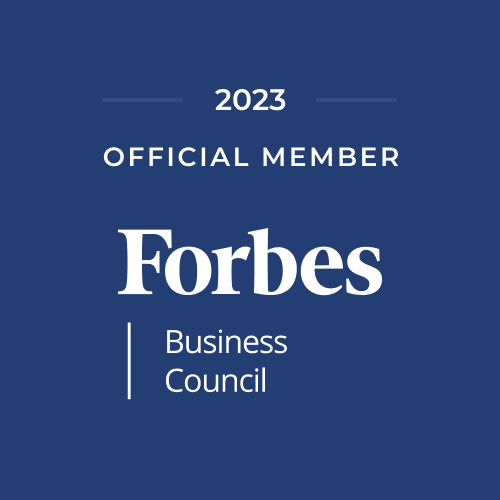Bookmarks: 5 Interesting Articles That May Help You This Week
/Each week, I select a few articles that rise above the fray and hopefully help you on your journey in the CRE world. They pull from one of four "corners:" corporate real estate, technology, management science and anything positive. I welcome your comments on these articles.
1. How Warehouses Are the Backbone of the E-Commerce Boom
Francis Scialabba
Sometimes, innovation looks like a baby stroller/e-scooter hybrid. Other times, it resembles a giant box standing awkwardly in a New Jersey meadow.
But what warehouses lack in aesthetics, they make up for in utility. These large sheds, containing all the items you’ve ever bought online, form the skeleton of an exploding e-commerce sector.
U.S. consumers spent a record $850 billion during the 2018 holiday shopping season, a 5% bump over 2017 driven almost entirely by online sales.
Every day, more than 1.5 million deliveries are made to NYC homes, a ~4x increase over 2009.
As always, Bezos saw this before we did
Amazon has ushered in an era of astonishing shopping convenience, introducing two-day, then one-day shipping via its Prime membership service. Other retailers, including Walmart, had no choice but to play along.
2. What Happens When You Buy From Gift Guides
Giacomo Bagnara
While guides can contain wildly disparate products, they’re mostly built on the same elements: a photo of the gift, a link to buy it, and maybe an explanation of its greatness. Often, you’ll find a small disclaimer along the lines of “All of our gifts are selected independently, and we may earn a commission if you shop through our links.”
It’s not that most writers, editors, and influencers in 2019 have any particular passion for picking out new pajamas for your sister’s kids. Instead, the internet has become a place largely fueled by shopping. Mostly unbeknownst to shoppers, purchase dollars from gift guides are often divvied up behind the scenes. A portion is kicked back to their digital inspiration, even if you wait a few weeks to buy something.
To get a share of that cash, the gift guide has expanded to fit every corner of the digital economy, pitting disparate factions of the internet against one another in a competition to recommend a new tie your dad will actually like.
3. 4 Fortress REITs Yielding 5% Plus
Getty
In this low rate environment, it’s becoming increasingly difficult to find high-quality dividend paying stocks on sale, especially the companies that have the strongest competitive advantages.
In the REIT sector, we pay very close attention to these primary advantages – cost of capital and scale – because they are the true drivers for earnings and dividend growth.
Long-term competitive advantage in a stable industry is what Warren Buffett and Charlie Munger seek in a good business. It is the economic moat around each business castle. Charlie Munger said, “We’ve really made the money out of high-quality businesses. In some cases, we bought the whole business. And in some cases, we just bought a big block of stock. But when you analyze what happened, the big money has been made in the high-quality businesses. And most of the other people who’ve made a lot of money have done so in high quality businesses.”
4. Google's new LA office is a restored World War II-era hangar that used to house the largest wooden plane ever built — take a look inside
Connie Zhou
Google expanded its LA presence last year, repurposing a historic airplane hangar to create new office space, and the results are nothing short of stunning.
The hangar, which once held the famed Spruce Goose plane, as it was derisively called, has been out of use for years. The Spruce Goose was the largest wooden plane ever built, due to wartime shortages during World War II. It flew just once, for under a minute, in 1947. It was once owned by filmmaker and pilot Howard Hughes, who also helped design the plane.
Now, the hangar where the Spruce Goose was kept for over 30 years has a second life as Google's LA office. Google worked with sustainable architecture firm ZGF to create a design that feels new and classic all at once.
5. The Suburban Office Park, an Aging Relic, Seeks a Comeback
Jeremy Lange, The New York Times
When Research Triangle Park in North Carolina opened in 1959, its bucolic setting was considered a major selling point. With office buildings hidden behind grassy meadows and swaths of pine forest, the quiet development was viewed as a perfect spot for the thinkers who went to work at companies like IBM and RTI International.
But tastes have changed, and in an effort to keep up, Research Triangle Park — the country’s largest corporate research park — is finally changing as well.
Plans to redevelop a portion of the park, which have been pending for eight years, are now moving forward. In a few years, Research Triangle Park, which lacks even a coffee shop within its 7,000 acres, will be home to restaurants, bars, shops and apartments.
The development’s challenges echo those of other suburban office parks around the country. Over the past decade, younger workers have come to favor urban environments that contain a variety of services and transportation options, a shift that has reduced the popularity of large, cloistered office settings.
Your success blesses others. I wish you a great a hugely impactful week!







